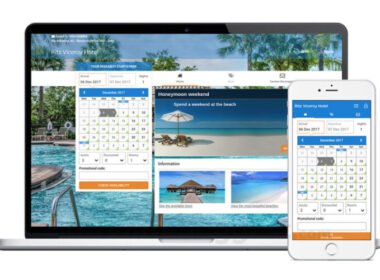Businesses require robust tools to efficiently analyse and visualise data. To acquire the necessary skills of business intelligence, it is recommended to undergo various courses such as Business Intelligence Training. One notable business intelligence tool that helps companies turn unstructured data into insightful information is Microsoft Power BI. Let’s explain What is Power BI and understand its key features in this blog.
Table of Contents
- What is Power BI?
- Features of Power BI
- Conclusion
What is Power BI
Microsoft offers Power BI, a business analytics tool. It provides charts, graphs, and BI tools so that even the end-user can design reports and navigate interfaces. Power BI also works well with other Microsoft products, making it convenient for organisations by using Microsoft products.
Key Components of Power BI are given below:
- Power BI Desktop: An application developed for the Windows operating system for the management of data reporting and data visualisation.
- Power BI Service:An internet-based system that generates and distributes reports as a part of an online SaaS (Software as a Service) service.
- Power BI Mobile Apps:These apps are available for Android, iOS, and Windows. Individuals can view and even work on their Power BI reports dashboards on mobile devices.
- Power BI Report Server: An on-premises report server that allows you to publish the Power BI report once you develop it in the Power BI Desktop application.
- Power BI Embedded:An Azure service enables programmers to incorporate dashboards and reports from Power BI into applications.
Features of Power BI
It is important to understand the essential features of Power BI and let’s analyse them below:
User Friendly Interface
Thanks to its user-friendly and intuitive interface, Power BI is accessible to users with different technical expertise. The ability to drag and drop elements streamlines the process of generating dashboards and reports. Without requiring in-depth training, users may effortlessly connect to data sources, clean and manipulate data, and produce visually striking visualisations.
Data Connectivity
Power BI’s many options for data connectivity are among its most notable features. It supports Excel spreadsheets, SQL databases, cloud services like Azure and AWS, web services like Google Analytics and Facebook, and many more data sources. Because of this flexibility, businesses can combine data from multiple sources into a single, cohesive perspective.
Data Transformation and Modeling
One of the most potent data connection and transformation tools included in Power BI is Power Query. Before entering data into the model, users can clean, manipulate, and shape it using Power Query. Thanks to Power BI’s data modelling features, users may construct associations between various data tables, generate calculated columns and measures, and use DAX (Data Analysis Expressions) to perform complex computations.
Interactive Visualisations
Power BI offers various visualisations, such as maps, scatter plots, bar charts, line graphs, pie charts, and more. These highly interactive visualisations allow users to highlight specific data points, explore details, and dynamically filter the data. Custom graphics can be created with the Power BI developer tools or imported via the Power BI marketplace.
Real-Time Data Access
Real time data availability is essential in the hectic commercial world of today. This data streaming is supported by Power BI, allowing users to watch data in real time and obtain immediate insights. Data from various sources, such as social media, Internet of Things devices and streaming analytics, can be shown on real-time dashboards.
Collaboration and Sharing
Working together and sharing insights with stakeholders and other team members is made simple with Power BI. Dashboards and reports can be posted to the Power BI Service, where anyone with the necessary rights can view them. Reports can also be exported to PDF or PowerPoint for offline reading, sent via email, and embedded in websites or applications.
Mobile Accessibility
Users may view their reports and dashboards on the move with Power BI’s mobile apps for Windows, iOS, and Android smartphones. Because the mobile apps are touch-optimised, viewing and engaging with data is accessible and possible from any location.
Cost-Effective Solution
Power BI is a reasonably priced business intelligence product with a flexible pricing model. The Power BI Desktop application costs nothing for individual users to create reports and visualisations. Power BI Pro and Power BI Premium are cost-effective for businesses with scalability and extra functionality. Because of their adaptability, Power BI plans appeal to a wide range of company needs and budgets.
Conclusion
With the help of Power BI, organisations can fully utilise the potential of their data thanks to this strong and adaptable solution. Power BI is a standout business intelligence solution because of its user friendly interface, strong security features, vast data integration and deep analytical capabilities. For more information, visit The Knowledge Academy.










